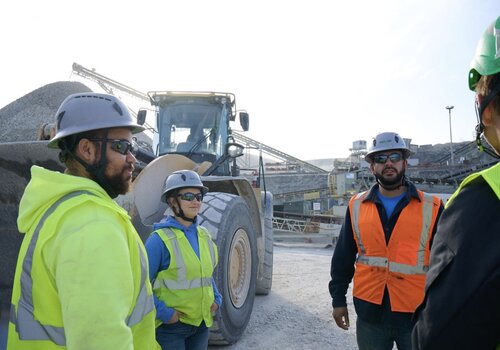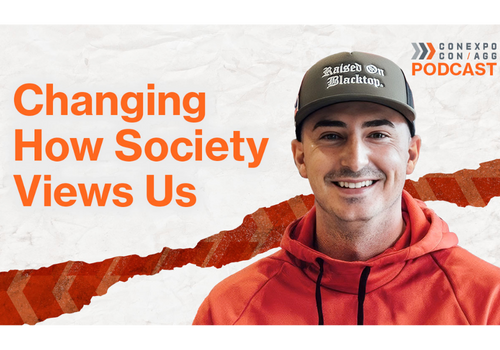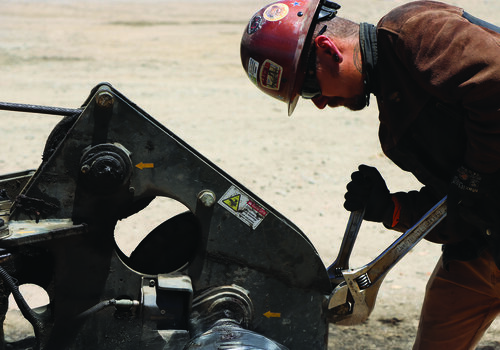Many industries claim they are the most stressful but with construction, it may be true. Kathleen Shea, Ph.D., says the normal course of business for construction is stressful. “Permitting processes with their multiple time frames and agencies and approval processes are maddening. Red tape is a stressor. And the supply chain remains disrupted. Availability and costs vary by the day, sometimes by the hour. It’s hard to give accurate estimates and no one enjoys change orders.”
Grappling with workplace stress can seem overwhelming. James Campbell Quick, Ph.D., recommends distilling stress to just two things as a starting point: “The whole topic of stress comes down to environmental conditions and individual responses.” Similarly, stress can be addressed from two perspectives: the employer and the employee.
Steps contractors and business owners can take
Studies from the University of Massachusetts Lowell indicate healthcare costs are nearly 50 percent higher for employees reporting high stress, 40 percent of job turnover is due to stress, and replacing workers can cost up to 200 percent of the salary of the position being filled. In addition to cost considerations, some employers want to reduce stress to create a healthy work environment for altruistic reasons.
Quick says effective leadership is key in managing stress. “You need resonante leadership, someone with emotional intelligence. Among employees you need an opinion leader, an influencer.”
Robert Vecchiotti, Ph.D., emphasizes the need for communication. “Hold special workshops. Have group discussions. This must-have candor and an action plan must emerge. Building trust is essential. Give employees books to read or a suggested reading list. And remember that this, too, shall pass. Take the long view.”
Thomas Li-Ping Tang, Ph.D., says one simple step is to start each day with a meeting to identify goals and tasks. The mood should be relaxed to encourage creativity and innovation. “Focus on the solution, not the problem.” He also says employees have a keen sense of justice and cites four types. Procedural justice involves processes, distributive justice is compensation, informational justice is the sharing of knowledge, and individual justice is treating each person with respect. As for goals, Prof. Tang says they should be SMART goals: Specific, to ensure clarity; Measurable, to maintain objectivity; Ambitious, to encourage stretching to new levels of performance; Realistic, to acquire commitment; and Time-bound, to attach a suitable level of urgency.
In his research entitled "Organizational Stress Around the World", Prof. Quick lists workplace stressors over which employers have at least some level of control. These include long hours, cultural values, low job control, and low sense of ownership. “Organizational stress can start at the top and have a negative cascading effect throughout the entire organization.”
He also says supervisors should set boundaries but then allow reasonable latitude within those boundaries. “Overcontrolling is detrimental, but discretionary latitude requires training. Turning workers loose requires that they be skilled and disciplined in order to avert problematic outcomes.” He says the solution is to have the right people but that it can be hard to screen for them initially. “There is no standardized method and some who present well in interviews will ultimately become problems. Just 1 to 3 percent of your workforce can create huge damage. At some point, you have to get them help or get them out.”
Dr. Shea notes that “Managing requires intervention. Who’s in charge of corrective action and how do they implement that?”
She also notes that in addition to stressors related to the business of construction cited at the beginning of this article, other stress is introduced in the social environment. One is hyperreactivity, responses escalating from annoyance to anger to rage in response to trivial slights and errors.
Some stress is typical in historically male-dominated industries, such as construction. “Masculinity has to be witnessed and must be prominent in order to be seen as valid,” says Dr. Shea. “Examples include louder voices and tougher words in a social environment.”
Just as important as what employers can do is what they can’t—or shouldn’t—do. “While many stressors result from the home/work interface, as an employer you must respect that boundary,” says Prof. Quick. “You can make appropriate referrals but you cannot be intrusive.” And in a more general sense, “You have to accept the limitations of the industry and society at large. You can be an outlier. You can provide a haven for your workers. But you’ll have little overall effect on the realities of larger, complex systems.”
While employers can’t serve as therapists, nor should they be expected to, it is helpful to keep in mind some fundamental differences among people. Prof. Tang says life satisfaction and work satisfaction tend to be closely connected for males but much less so for females. And individuals deal with stress differently depending on which of the five main character types are dominant in their lives. “Those exhibiting Extraversion, Openness, and Conscientiousness are better at stress management. Those defined by Neuroticism are, as might be expected, less successful. And those marked by Agreeableness can go either way depending on their social connections. Regardless, providing plenty of resources and support will reduce stress.”
Dr. Quick advises that employers look into the Society for Occupational Health Psychology and the Society for Industrial and Organizational Psychology for resources.
Construction stress: real or imagined?
For employees, sometimes stress is the problem but sometimes it’s the perception of stress. The mind and body behave similarly whether the stress is real or merely perceived or some combination of the two.
Dr. Vecchiotti says employees should maintain a positive self-image and engage in supportive self-talk. “Most people are good, so tell yourself, ‘I am a good person. I am a competent person.’ Remind yourself that you are resilient by thinking back on past successes. Ask yourself, ‘Do I feel stressed?’ If the answer is yes, say, ‘Give me the evidence for why I should feel this way. Am I justified to feel stressed?’ Describe the situation you’re in and then try reframing those perceptions.” Ask friends close to you for their input, but ask in a way that encourages new insights rather than supporting your confirmation bias.
A good tool for managing stress is cognitive behavioral therapy, which teaches us to challenge the validity of our thoughts.
Sometimes our stress comes about because the reality of our situation does not match our expectations. This cognitive dissonance requires a shift in thinking, typically a re-evaluation of our initial expectations. It may be that we were wrong at that time because of an error on our part. But it may also be that we had incomplete information then or that an external, unforeseen force has nudged the project’s trajectory from its original path into its current state.
In the cab or on the ground: how employees can manage stress
Having established the actual level of stress, it’s time to take action to manage that stress. Dr. Vecchiotti offers three easy tips: Reduce your To-Do list, prioritize the tasks that remain, and then distribute resources, such as time and personnel, to accomplish those tasks. He also says an internet search will yield an amazing array of stress management tools, more than any one person could apply in a lifetime; see "Coping with Stress" from the CDC. How to choose? “Use the ones that are relatable, applicable, comfortable, and likely to produce the desired results.”
Multitasking creates stress and reduces the quality of work outcomes, says Prof. Tang. “It emphasizes on speed and productivity but it’s better to concentrate on one task.” He says employees who multitask often put 50 percent of the required effort into multiple tasks rather than 100 percent of the needed effort in one task and the results reflect this reduction of effort.
“Mindfulness training is the key,” says Prof. Tang. “It reduces the love of money directly which then indirectly reduces unethical behavior. Focus on what you have, not what you lack or what you desire. It all comes down to your personal response to stress and your hardiness in the face of that stress.” He emphasizes the Three Cs of hardiness: Commitment to the project at hand; Control over management of the task and your response to the stress it generates; and Challenge, which is seeing the project and its attendant stress as a challenge to be overcome, not an insurmountable or unwelcome that brings the threat of failure.
Finally, realize that some stress is a good thing, says Dr. Vecchiotti. “Healthy stress provides motivation, a call to action. Seeking to eliminate stress is not an achievable goal. Instead, redirect stress to strengthen you and your organization.”












